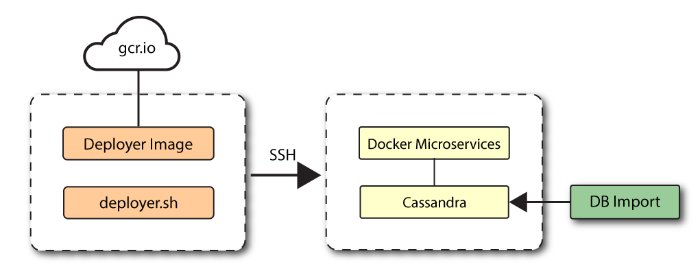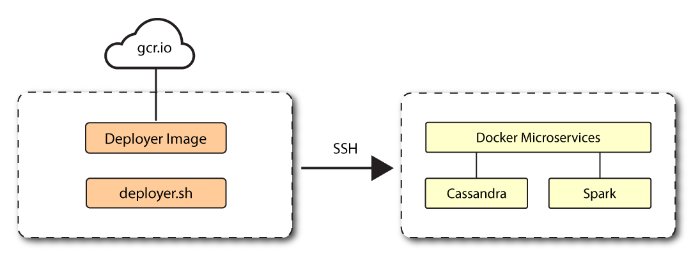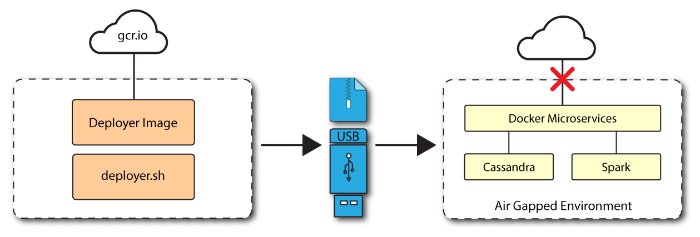Deployment Architectures
To simplify your deployments, ForgeRock provides a deployer script to install Autonomous Identity on a target node. The deployer pulls in an image from the ForgeRock Google Cloud Repository (gcr.io) and uses it to deploy the the microservices, analytics machine, and database for Autonomous Identity on a target machine. The target machine only requires the base operating system, CentOS 7 or later.
There are five basic deployments, all of them similar, but in slightly different configurations:
Lightweight Single-Node Target Deployment. Deploy Autonomous Identity on a single target machine without the analytics pipeline. This alleviates any direct data load on your target machine, which can be memory intensive. You can deploy this configuration on a 2-core 8 GB virtual machine on a cloud service, such as Google Cloud Platform (GCP), Amazon Web Services (AWS), or others. This configuration is only for evaluation purposes and is outlined in Getting Started.
Figure 3: A lightweight single-node target deployment.
Single-Node Target Deployment. Deploy Autonomous Identity on a single Internet-connected target machine. The deployer script lets you deploy the system from a local laptop or machine or from the target machine itself. The target machine can be on on-prem or on a cloud service, such as Google Cloud Platform (GCP), Amazon Web Services (AWS), Microsoft Azure or others. For installation instructions, see Install a Single Node Target.
Figure 4: A single-node target deployment.
Single-Node Air-Gapped Target Deployment. Deploy Autonomous Identity on a single-node target machine that resides in an air-gapped environment. In an air-gapped environment, the target machine is placed in an enhanced security environment where external Internet access is not available. You transfer the deployer and image to the target machine using media, such as a USB stick or portable drive. Then, run the deployment within the air-gapped environment. For installation instruction, see Install a Single Node Air-Gap Target.
Figure 5: An air-gapped environment.
Multi-Node Deployment. Deploy Autonomous Identity on multi-node deployment to distribute the process load on the servers. For installation instruction, see Install a Multi-Node Deployment
Figure 6: A multi-node target environment.
Multi-Node Air-Gapped Deployment. Deploy Autonomous Identity a multi-node configuration in an air-gap network. The multinode network has no external Internet connection. For installation instruction, see Install a Multi-Node Air-Gapped Deployment.
Figure 7: A multi-node air-gapped target environment.




